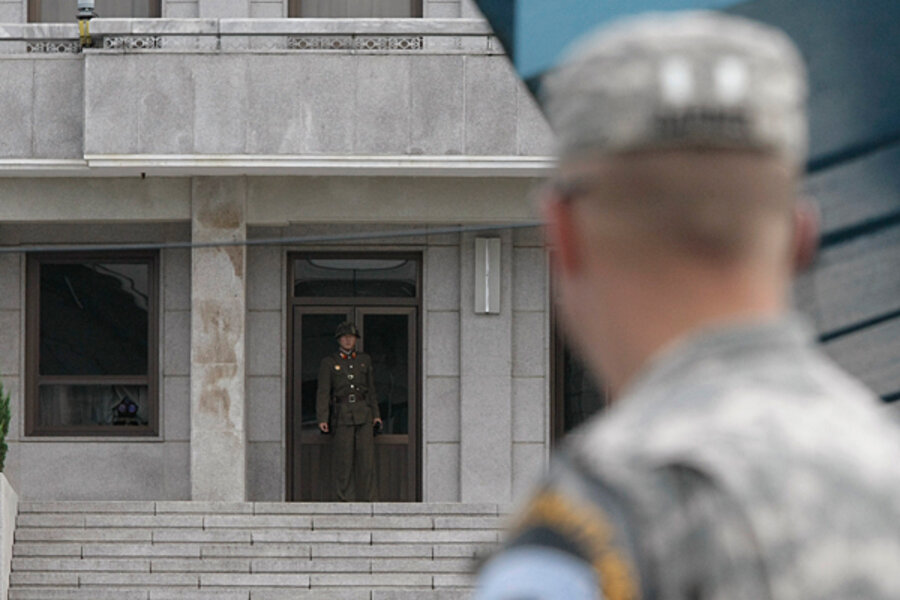South Korea OKs humanitarian aid trip to North Korea
Loading...
| Seoul, South Korea
For the first time since the sinking of the South Korean Navy corvette Cheonan in March, South Korea is giving permission for humanitarian aid to North Korea.
The aid is extremely limited and is going to the closest point in North Korea to Seoul, which is 40 miles south of the line between the two Koreas. Nonetheless, the planned journey next week of a South Korean doctor and two drivers to the ancient Korean capital of Kaesong, where they will deliver antimalaria drugs, may signal a slight shift in policy.
That was the impression Friday after a spokesman for the Unification Ministry, responsible for dealings with North Korea, said the government had authorized the doctor to bring about $336,000 worth of drugs to the city.
President Lee Myung-bak banned all forms of aid after the Cheonan was torpedoed in the Yellow Sea in March with a loss of 46 sailors. But he relented under severe criticism. Opposition politicians and religious leaders in particular have called for relaxation of the ban in hopes of relaxing tensions between the two Koreas.
Then again, the decision to permit a doctor to bring antimalaria aid to the North may been motivated by the South’s desire to keep the disease from South Koreans, including South Korean managers and technicians in the nearby Kaesong Economic Complex.
A Unification Ministry spokesman had a simple explanation for why the government had decided a doctor could make the journey. Malaria, he said, had “the potential to affect South Korean residents south of the border,” and the doctor has to go there “to explain to the North how to use the aid kits.”
Relief from string of recriminations
The mission to Kaesong, next to the “truce village” of Panmunjom, where the Korean War armistice was signed on July 27, 1953, is seen as a small sign of relief from the recriminations of recent weeks.
North Korea threatened to return “fire with fire” during recent exercises by South Korean forces in the Yellow Sea, and North Korean gunners early this week fired 130 rounds into the sea near where the Cheonan went down. Ten of the shells landed on the South Korean side of the line below which North Korean ships are banned.
South Korea’s Unification minister, Hyun In-taek, said Friday the North was “cornering itself into further isolation with its threats and provocations.”
Kevin Shepard, an expert on North Korea at the Pacific Forum of the Center for Strategic and International Studies in Honolulu, said, however, that South Korean President Lee’s decision to ban much of the trade between North and South Korea has been “unhelpful.”
Inter-Korean trade in the first six months of this year hit a record $983.2 million, with the North enjoying a favorable balance of $122 million. But it was expected to plunge by 30 percent in the second half of the year as a result of severe cuts ordered by Lee.
North Korea may not suffer all that much from Lee’s decision. The North’s “economic losses are expected to be absorbed through increased cooperation with China,” Mr. Shepard said at a conference here, while US and South Korean military exercises “are likely seen as an inevitable result of Lee’s hard-line policies.”





